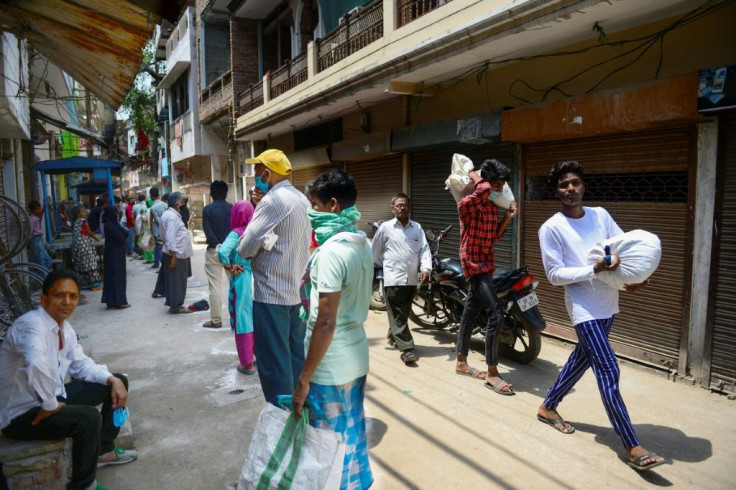Barclays Warns India’s GDP Will Show Zero Growth In 2020

KEY POINTS
- Barclays cut its calendat 2020 GDP forecast for India to zero from an earlier estimate of 2.5%.
- Narendra Modi has extended the previous three-week lockdown to at least May 3
- Barclays estimated the lockdown extension will lead to economic losses of up to $234.4 billion
British investment bank Barclays has cut its forecast for India’s calendar 2020 gross domestic product growth down to zero (from an earlier estimate of 2.5%), citing the Indian government’s decision to extend a nationwide lockdown as a means of limiting the spread of coronavirus.
Indian Prime Minister Narendra Modi has extended the previous three-week lockdown to at least May 3, although he suggested certain parts of the country may begin to relax these restrictions on Apr. 20.
Barclays estimated the lockdown extension will lead to economic losses of up to $234.4 billion -- up from its prior projection of $120 billion for the former three-week lockdown -- assuming India remains under a partial lockdown at least through the end of May.
For 2021, Barclays reduced its growth forecast for India from 3.5% to 0.8%.
“While India’s COVID outbreak has not officially reached the community transmission stage, we believe the existing restrictions on movement are causing much more economic damage than anticipated,” Barclay stated.
Barclays said the economic damage will hit certain sectors harder – including mining, agriculture, utilities, manufacturing and services. The more industrialized regions of the country --Maharashtra, Delhi, Tamil Nadu and Punjab – will suffer outsized losses.
“This is a direct reflection of the high [COVID-19] case counts in these states, and lockdowns that are likely to persist across several sectors and for longer time periods than in the rest of the country," the bank said.
Barclays indicated that even provinces that are likely recover the fastest once the pandemic passes -- Kerala, Karnataka and Haryana – their typically low spending on discretionary consumption like travel and recreational services will lead to only a moderate economic gain in the third quarter.
Barclays also described the recent fiscal stimulus package from the Indian government and the central bank as “modest” and does not think these measures will compensate for the negative impact of the lockdown. The full impact of the lockdown, Barclays added, will be felt in the second quarter.
Barclays projected once the lockdown passes, the rate of recovery will depend upon support by the government.
“Our trajectory of a slower recovery factors in the only modest fiscal stimulus unveiled by the government up to now,” Barclay said. “Major policy interventions, if taken, could, however, change the outcome and bring about a faster upswing after the lockdown opens. That said, the slowdown in early [second quarter]… is unlikely to be impacted by [government] policy support.”
Also, on Tuesday, the International Monetary Fund, or IMF, cut its fiscal 2021 GDP growth forecast for India to 1.9% (down from its previous estimate of 5.8%) although it expects economy to rebound in fiscal 2022.
Gita Gopinath, economic counselor at IMF characterized the Covid-19 crisis as unprecedented and will cause far worse losses than those endured during the Great Recession.
“This time, the crisis is to a large extent the consequence of needed containment measures. This makes stimulating activity more challenging and, at least for the most-affected sectors, undesirable,” Gopinath wrote.
However, IMF forecasts a GDP growth rate of 7.4% during fiscal 2022.
The government’s Ministry of Health and Family Welfare reported 8,988 confirmed coronavirus cases and 339 deaths as of Tuesday.
© Copyright IBTimes 2025. All rights reserved.





















